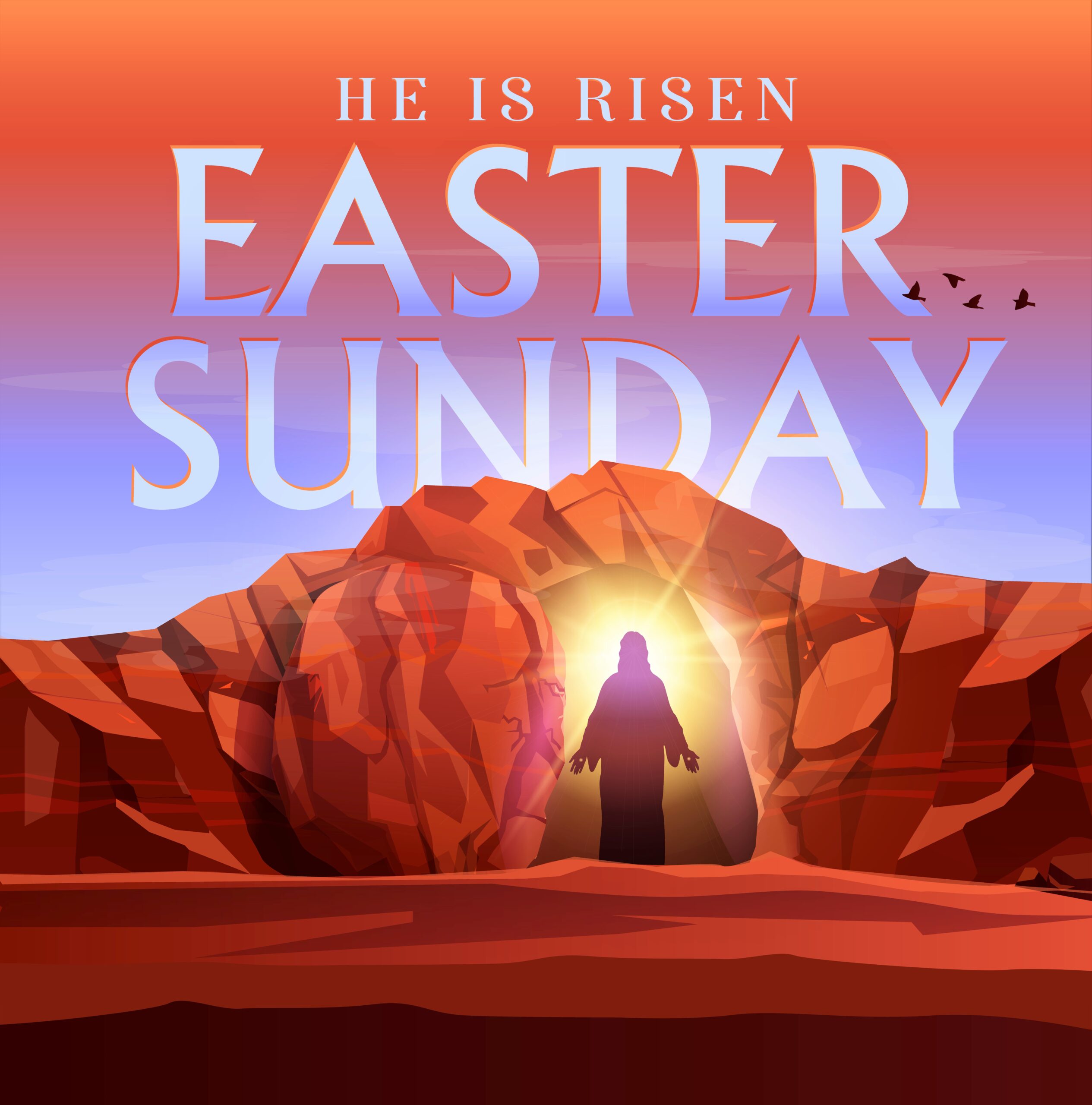A reflection by Fr John McEvoy in Fiji to wish all our supporters, families and friends a Happy Easter!
“He is not here.” Acts 10:34a, 37-43; Col 3:1-4; Jn 20:1-9
I can spend hours wandering through graveyards, reading dates and names on headstones. I find it therapeutic and even peaceful. Mostly they are ordinary headstones over ordinary people. But there are elaborate monuments to dead people in many parts of the world, like the pyramids in Egypt, which are gigantic tombs containing the mummified bodies of the Pharaohs, or the Taj Mahal in India.
Many people visit Westminster Abbey in London because the dead bodies of famous writers, philosophers and politicians are entombed there. The tomb of St Peter can be found in the crypt of St Peter’s in Rome beneath the Basilica’s main altar.
Some years ago, I visited the Holy Land, and there is a Shrine of the Holy Sepulchre in Jerusalem. Pilgrims from all over the world visit an empty tomb, with a note at its entrance which says, “He is not here.”
It is famous because Jesus Christ, who was once buried there, rose from the dead, leaving an empty tomb, as He had told his disciples he would. Thus, He worked the most important miracle in His life. We rejoice at this unique event by celebrating Easter.
Easter is the greatest and the most important feast in the Church Calendar. “Easter” means “the feast of fresh flowers.” Easter falls towards the end of spring in the northern hemisphere when new life is in full bloom again after a hard and cold winter. The fields and hedgerows are brimming over with new life. There are newly born lambs in the fields and chickens in the farmyards. The birds are building nests – and the days are lengthening. Summer is around the corner.
We are all familiar with the crib or the nativity scene in our churches for Christmas. But in recent years, what is becoming very popular in churches is the Easter Garden – with a variety of new flowers, the sign of new life is everywhere, depicted by rubber shapes of chickens, rabbits, etc. and in the middle of the garden is the figure of Christ emerging from the darkness and coldness of the tomb into this wonderful new life. So, Easter is the celebration of new life in the Risen Lord. Easter is the Feast of Hope.
The tomb was empty on Easter Sunday morning (Luke 24:3). Although the guards claimed that the disciples of Jesus had stolen the body, every sensible Jew knew that it was impossible for the terrified disciples of Jesus to steal the body of Jesus from a tomb guarded by an armed, 16-member Temple Guard detachment.
On receiving the Holy Spirit on the day of Pentecost, it transformed these men who were hopeless and fearful after the crucifixion into men who now were confident and bold witnesses to the Resurrection. Neither the Jews nor the Romans could disprove Jesus’ Resurrection by presenting his dead body. On the contrary, the Apostles and early Christians would not have faced martyrdom if they were not 100% sure of Jesus’ Resurrection.
The Empty Tomb and the Resurrection are Good News, but it is sometimes painful because it involves death. We’re called to die to sin, die to self even die to our dreams so that God can do what He wants to do with our lives. Resurrection is about seeing the world in a new way. Early on that first Easter morning, Mary Magdalene did not find what she was looking for: the dead body of Jesus!
But she found something better than she could have imagined: the Risen Jesus. Sometimes, what we think we want the most is not granted to us. Instead, we get an experience of God’s new ways of working in the world. That’s the power of the Resurrection. We must spread the news when those moments come, just as Mary Magdalene did: We have seen the Lord!
Easter, the feast of the Resurrection, gives us the positive message that we are people of the “Resurrection.” This means we are not supposed to lie buried in the tomb of our sins, evil habits, and dangerous addictions. This Good News means that no tomb can hold us down anymore – not the tomb of despair, not the tomb of discouragement, or the tomb of doubt, nor that of death. Instead, we are expected to live a joyful and peaceful life, constantly experiencing the Risen Lord’s real presence in all our lives.
Yes, his tomb was empty. ‘He is not here’. We are an “Easter people”, so let us celebrate Easter with pride, freedom and rejoicing.
“This is the day the Lord has made; let us rejoice and be glad in it”.
Columban missionary Fr John McEvoy lives and works in Fiji.

